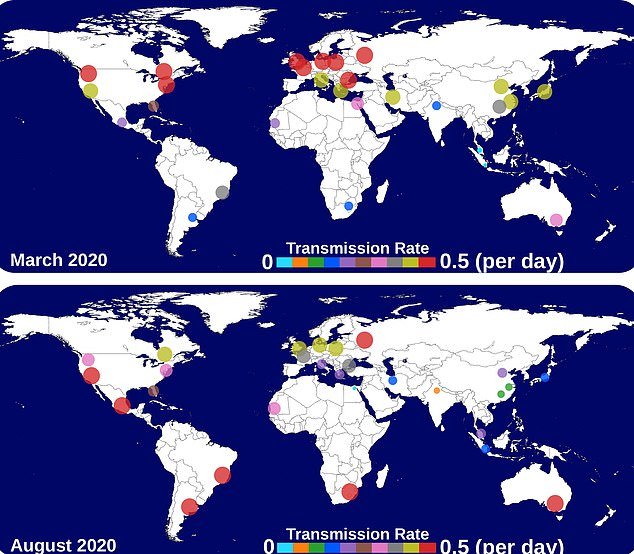Coronavirus: Researchers say virus forecasts should focus on weather
New research paper by University of Nicosia says weather conditions play a key role in where and when a next wave of the pandemic will strike
Temperature, humidity and wind play a big part in the transmission of the coronavirus, newly published research by two scientists working at the University of Nicosia suggests.
Professor at the medical school of the university Dimitris Drikakis who carried out the research with his colleague Talib Dbouk says current forecasting models only take into account two factors – rate of transmission and recovery.
However, the weather conditions around the globe play a key role in where and when a next wave of the pandemic will strike.
“When temperatures go up, during the summer months, infection numbers drop, and they increase with the increase in both relative humidity and wind speed,” Drikakis told the Cyprus Mail.
“The results suggest that two pandemic outbreaks per year are inevitable because they are directly linked to what we call weather seasonality. The pandemic outbreaks are associated with changes in temperature, relative humidity, and wind speed independently of the particular season,” the paper argues.
The study, published in the journal Physics of Fluids, also found the second wave of infections is different depending on if a place is north or south of the equator.
This is due to different timings of the seasons in the northern and southern hemispheres, with the data for Paris and Rio de Janeiro differing significantly.
For their study, Dbouk and Drikakis created a computer model which accounts for variations in weather as well as virus behaviour.
The AIR (Airborne Infection Rate) index focuses on the concentration of coronavirus particles under different conditions.
“We propose that epidemiological models must incorporate climate effects through the AIR index,” Drikakis said.
AIR was applied to coronavirus data from summer 2020 in Paris, New York City and Rio de Janeiro and was able to predict the second wave of Covid-19 in these cities.
“The results show that in March 2020, when temperatures increase, the transmission rate increases as we move toward the northern regions of the planet. While in August 2020, it starts to grow in the southern areas,” the scientist explained.
The effect of wind also has an impact.
Effect of wind speed. Wind at (a) 4 km/h, (b) 10 km/h, (c) 15 km/h, and (d) 20 km/h
“Since the coronavirus pandemic began, we have all been told to socially distance by standing or sitting two metres apart from strangers,” he said. “But this is incorrect. It only applies when it is not windy at all. The droplets travel faster, even in light winds. Two metres is just the minimum.”
“In pandemics, where massive and effective vaccination is not available, the government planning should be longer-term by considering weather effects and design the public health and safety guidelines accordingly,” Dbouk added.
“This could help avoid reactive responses in terms of strict lockdowns that adversely affect all aspects of life and the global economy.”
The paper is just part of the research the two scientists are involved in. As Drikakis told the Cyprus Mail, they have previously studied face masks, the effect of wind in transmitting the virus, and the transmission in confined spaces such as elevators.
“We will investigate further details and models. Also, some people are more prone to get infected, while others are less susceptible. So what does the transfer of droplets do to these individuals?”
Fluid dynamics and epidemiology: Seasonality and transmission dynamics. Physics of Fluids 33, 021901 (2021); https://doi.org/10.1063/5.0037640
Source: Coronavirus: Researchers say virus forecasts should focus on weather | Cyprus Mail


